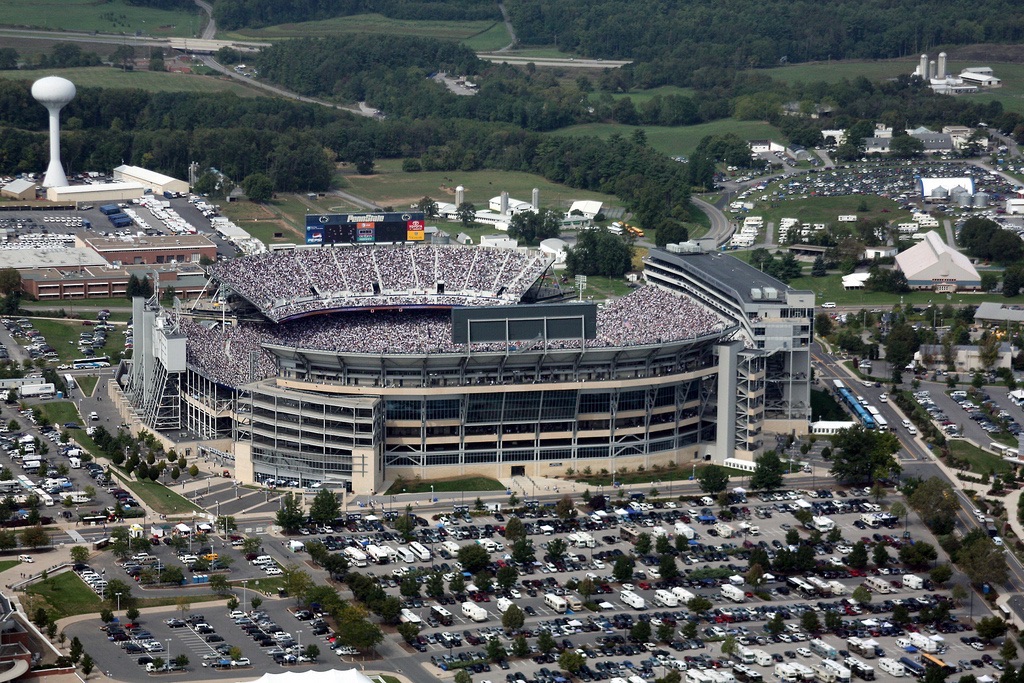Penn State University is currently examining the future of Beaver Stadium, with two main options: either renovating the current facility or building a new on-campus stadium.
Beaver Stadium opened in 1959 and has been renovated over the years, most recently in 2001, to reach a 107,282-seat capacity. But most of these renovations were done in the name of cramming more seats into the footprint or enhancing athletic-department facilities, often with little regard for how fans would experience a Nittany Lions football game. But the Beaver Stadium future will focus on the fan experience, as the many shortcomings in the stadium — like the lack of hot water, the limited concessions and the crammed seating — will be addressed. The decision will be whether it’s more cost-effective to renovate the existing stadium or start from scratch on a new facility. From Philly.com:
[Athletic Director Sandy Barbour] said the athletic department, and the architecture firm it has hired, will weigh costs of renovations against cost of replacing the stadium entirely, while taking into account fan experience and recruiting advantages.
“I don’t want the answer to be new [Beaver Stadium].” Barbour said.
Financials are a concern, however. At the University of California, where Barbour was the athletic director until 2014, she oversaw construction of a new football complex and a large renovation of Memorial Stadium. The projects put the university in an estimated $445 million debt by June 2013, and nearly forced it to cut four sports teams, including baseball.
Indeed, it will all come down to the dollars. Penn State is a major economic player in the game, and the Nittany Lions have a particularly passionate fan base — one that can fill Beaver Stadium on most Big Ten weekends. It’s a matter of monetizing the base without losing the special game-day experience.
Image courtesy Penn State University.

